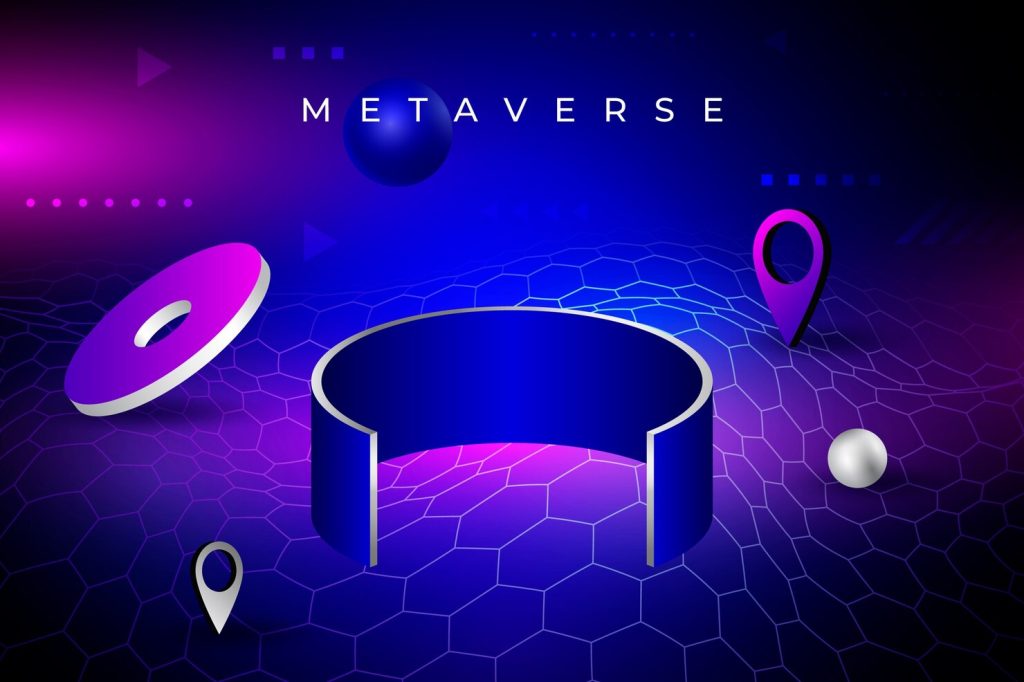In the realm of cutting-edge digital innovation, the intersection of Web3 and metaverse sparks a revolution that beckons exploration. As a passionate Web3 enthusiast, diving into the relationship between these paradigms unveils an interconnected landscape where the evolution of the internet converges with immersive digital experiences. Let’s embark on a journey to unravel the profound connection between Web3 and metaverse, exploring their symbiotic relationship and the transformative impact they wield.
How is Web3 and Metaverse Related?
Web3, with its emphasis on decentralization, transparency, and user autonomy, shares a fundamental synergy with the metaverse. The metaverse, often conceptualized as a collective virtual shared space, represents a digital universe where individuals interact, create, and engage in diverse experiences.
Web3’s Impact on the Metaverse
Web3 technologies are poised to revolutionize the Metaverse by fundamentally altering the way users interact, create, and own within virtual realms. One key aspect lies in decentralized systems and blockchain technology, which empower users with true ownership of their digital assets.
This ownership extends to virtual goods, properties, and even avatars, all secured on immutable ledgers, fostering a new era of trust and authenticity within the Metaverse. Moreover, Web3’s emphasis on interoperability allows for seamless movement of these assets across different virtual worlds and platforms, creating a unified experience and enabling users to carry their belongings and identities wherever they go in the Metaverse.
Furthermore, the integration of tokenization and NFTs (Non-Fungible Tokens) through Web3 paves the way for a vibrant digital economy within the Metaverse. Creators can tokenize their creations, turning them into unique digital assets that users can buy, sell, and trade, thus fostering a flourishing marketplace for virtual goods and services.
This shift toward a decentralized, peer-to-peer economy offers new opportunities for monetization and entrepreneurship within the virtual space, empowering creators and users alike to participate in the economy of the Metaverse.
However, challenges persist, including scalability, regulatory concerns, and user adoption. Achieving a seamless, user-friendly experience while maintaining decentralization and security remains a complex task. Nevertheless, Web3’s principles of decentralization, ownership, and interoperability stand to significantly transform the Metaverse, laying the groundwork for a more immersive, interconnected, and user-driven virtual environment.

Web3 and the Evolution of the Metaverse
The evolution of the metaverse is propelled by Web3 technologies, notably blockchain. The decentralized nature of blockchain aligns with the metaverse’s aspiration to create an open, permissionless environment where users have ownership and control over their digital assets and experiences.
Enhanced Interactivity and Engagement
One of the defining features of the metaverse powered by Web3 is its unparalleled interactivity and engagement. Through blockchain technology, users can seamlessly traverse various virtual environments, interact with other participants, and create, own, and trade digital assets securely.
NFTs: Redefining Ownership in the Metaverse
Non-Fungible Tokens (NFTs) stand as a testament to the transformative impact of Web3 on the metaverse. These unique digital assets, often underpinned by blockchain, enable individuals to assert ownership over virtual properties, artworks, wearables, and other immersive experiences within the metaverse.
Blockchain’s Role in Crafting the Metaverse
Blockchain technology serves as the backbone of the metaverse, ensuring transparency, security, and authenticity of digital assets and interactions. Smart contracts within Web3-enabled blockchains facilitate the creation of decentralized applications (dApps), fostering a vibrant ecosystem within the metaverse.
Emerging Web3 Metaverse Projects
Several pioneering projects at the intersection of Web3 and the metaverse are spearheading innovations. Decentraland, Sandbox, and CryptoVoxels are platforms leveraging Web3 technologies to create immersive virtual worlds where users can build, explore, and monetize their creations.
Exploring the Intersection of Web3 and Metaverse
The intersection of Web3 and the metaverse is exemplified by pioneering projects that harness blockchain and decentralized technologies to enhance the virtual experience. Platforms like Decentraland, The Sandbox, and CryptoVoxels epitomize this synergy, offering users the opportunity to own virtual real estate, create unique experiences, and interact with others in a decentralized manner.
The Future Nexus of Web3 and Metaverse
As the metaverse continues to evolve, Web3’s influence will persist, shaping its trajectory and possibilities. This convergence holds the potential to redefine entertainment, commerce, social interactions, and beyond, fostering a digital landscape where user participation, ownership, and innovation reign supreme.
In conclusion, the relationship between Web3 and metaverse signifies a transformative synergy that heralds a new era of digital interaction and ownership. Web3’s decentralized ethos amplifies the immersive potential of the metaverse, promising a future where users navigate interconnected virtual realms with unprecedented autonomy and engagement.
As we embrace this juncture of technological innovation, the fusion of Web3 and metaverse unveils a realm where imagination meets reality, redefining the very fabric of digital existence.


2 Responses
Very helpful post
My opinion, the question is fully disclosed, the author tried, for which my bow to him!